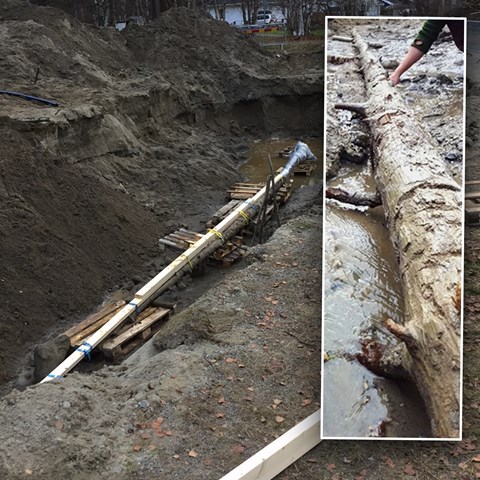Contact
Department of Forest Ecology and Management, Department of Forest Ecology and Management, joint staff
Department of Forest Ecology and Management, Department of Forest Ecology and Management, joint staff

Forest fires were more prevalent in the early post glacial forests in northern Sweden than previously anticipated. In unearthing three pines which had been buried for almost 10 000 years in Västerbotten, researchers from Umeå university and SLU found marks from multiple forest fires from a time when the ice sheet was still receding.
– These pine trees were buried around 9 700 years ago, says Jonatan Klaminder, professor at the department of forest ecology and management at SLU. The fact that fires occurred during these early years of Swedish history tells researchers that plants quickly established themselves on soils which were covered in a permanent ice sheet only decades earlier.
The study, which was published in the journal Vegetation History and Archaeobotany, shows that the three unearthed pine trees are marked by four separate forest fires at surprisingly short intervals.
– Usually, at least 100 years will pass between fires in natural forests. But in the ancient environment of these trees, which appears to have been both cold and damp, less than 25 years separate the fires, which is quite perplexing, says Lars Östlund, professor in forest history at SLU.
Conclusions on the temperature and climate during this era has been deduced using carbon isotopes in the wood, as well as analysing tree rings which show signs of summers with much slower growth rates. The researchers suspect that the unstable climate with frequent lightning strikes, in combination with lower intensity forest fires explain the unusual frequency of fires.
Landscape of ice and fire: uniquely well-preserved scots pine trunks reveal forest fires near the retreating weichselian ice margin
Authors: Jonatan Klaminder (Umeå university), Magdalena Fassl (SLU), Marlène Baudet (SLU), Lars Östlund (SLU).
Vegetation History and Archaeobotany, 2023 (external link): https://link.springer.com/article/10.1007/s00334-023-00974-6